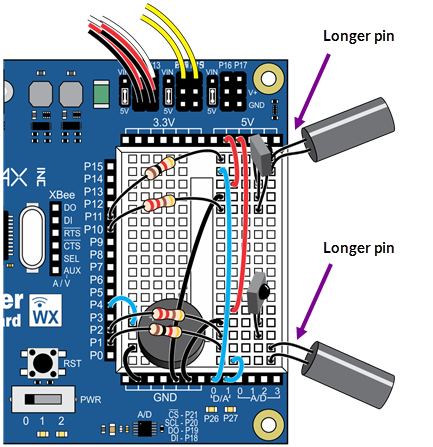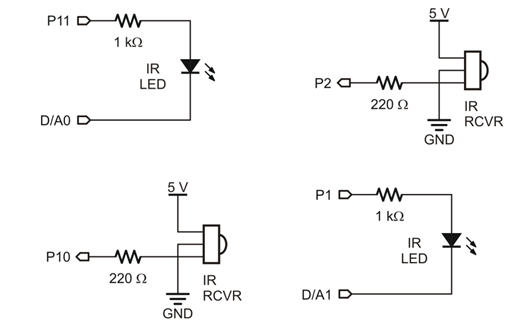In this activity, you will build and test the infrared object sensor system to make sure they detect objects in front of the ActivityBot. Just like the whisker circuits, there is one on the right and one on the left so the ActivityBot can determine which way to turn in relation to the obstacle.
In this case, each side needs two electronic components: an LED that rapidly flashes infrared light, and an infrared receiver to detect a reflection of that infrared light bouncing off of objects nearby.
Circuit
Parts Required
(2) IR LEDs
(2) IR receivers
(2) 1 k-ohm resistors (brown-black-red)
(2) 220-ohm resistors (red-red-brown)
- Find the two IR LEDs in your kit — they are the clear ones with dome-shaped (not flat) tops.
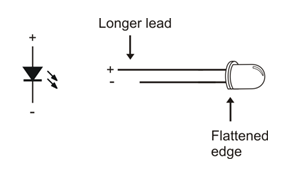
Assemble the IR Headlights
The infrared LEDs are designed to sit in the standoff tubes a certain way. The flat spot on the LED dome matches a flat ledge inside the tube. Holes on the bottom of the tube are labeled for the anode (+) and cathode (-) leads.
- Find the two IR LEDs in your kit — they are the clear ones with dome-shaped (not flat) tops.
- Insert the infrared LED into the LED standoff tube, threading the anode and cathode leads through their respective holes in the bottom. If properly aligned, the LED should drop in place without pushing.
- Slip the short tube over the IR LED’s clear plastic case, tab end first. The tabs should snap into the standoff, holding the LED in place.
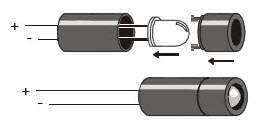
Meet the IR Receivers
- Find the IR receivers in your kit. The receivers are a tiny box with a dome on one end and three leads.
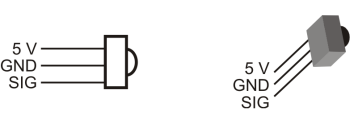
Build the Sensors
The IR LED’s cathodes are connected to the D/A0 and D/A1 sockets on the Activity Board WX. These two special sockets can output a variable voltage. This voltage can be increased to make the IR LEDs dimmer, for closer range detection. (They can even be tested at different voltages—levels of dimness—to get a rough idea of the object’s distance, but that's for another activity...)
- Use this wiring diagram and schematic to build the infrared detectors.
- Make sure the longer IR LED anode pins — the longer pins— are plugged into the rows shown in the wiring diagram.
